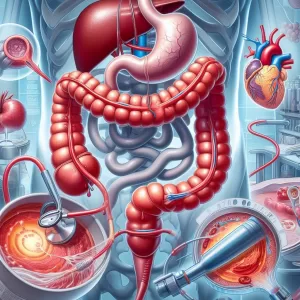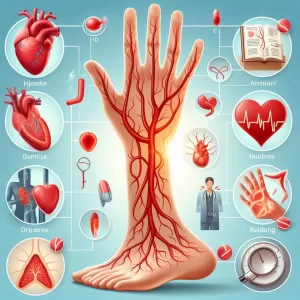What is Cystometry: Overview, Benefits, and Expected Results
Definition and Overview
Cystometry is a diagnostic test that determines bladder pressure especially upon voiding or urinating. It is one of the many urodynamic function tests that assess how well the bladder is functioning.
The bladder is part of the urinary system and is connected to the kidneys through the ureter. It is made up of muscles, sits on the pelvic floor, and is hollow to allow the collection of urine. The bladder has a very interesting mechanism: around its walls are nerves that send signals to the brain. The bladder holds on to the urine while the sphincter muscles keep the urine in the bladder. Once the nerves detect that there’s already enough urine in the bladder, it delivers the signals to the brain, and the bladder relaxes, emptying itself. In turn, it is prepared to accumulate the next batch of urine.
Some people, however, develop bladder issues, specifically incontinence or the involuntary control of the bladder. Not only is this embarrassing—as the person may suddenly urinate in a public area—but it can also be a sign of a more serious condition affecting the bladder or any part of the urinary system.
For this reason, cystometry is conducted to help evaluate bladder function, particularly control. It may be taken alongside other urinary tests.
Who should undergo and expected results
The physician, who can be a urologist or a gynecologist, may request for cystometry if the patient has:
- Diabetes – Diabetes is a metabolic condition that is characterized by abnormally high level of insulin, a sugar-related hormone, in the blood. When a person has diabetes, it’s either the pancreas doesn’t produce insulin (type 1) or the organ itself becomes defective and produces excessive amounts of insulin (type 2). Some pregnant women may also experience diabetes (gestational). Diabetes can affect the nerves in the long run, including those in the kidneys, a condition known as renal nephropathy. Sufferers are also prone to an overactive bladder, urinary tract infection, and weak sphincter muscles.
- Neurological diseases – Neurological diseases affect not only the brain but also the rest of the central nervous system, such as the spine and the nerves, which serve as the communication pathway between the various organs of the body like the bladder and the brain. One of the related diseases is multiple sclerosis (MS), an autoimmune disease that attacks the myelin, a protective sheath of the nerve fibers. In the process, it causes problems with nerve communication. At least 75% of people diagnosed with MS experience bladder issues.
- Urine incontinence – Also referred to as bladder control loss, this is the sudden and involuntary passing of urine. The problem can be very mild or severe that the sufferer may not be able to reach the restroom on time.
- Injuries – A person who suffers from injuries that affect the central nervous system or the urinary system may be assessed for bladder function using the test.
- Recurrent urinary tract infection – UTI is an infection that affects any part of the urinary system, although it’s usually associated with the urethra and bladder, especially among women. The infection may lead to incontinence and other bladder problems.
How the procedure works
Gynecologists (for women) and urologists (for men) may request for cystometry, although other specialists may also do so. The test doesn’t require any special preparation such as fasting, but the doctor may advise stopping certain medications that can affect the result of the test. The doctor will also ask if the patient has an underlying condition like diabetes or, in the case of women, if they are pregnant.
Before the actual test, the patient needs to urinate in a toilet that is attached to a uroflowmeter, a special machine that can provide many details about the urination, such as the speed, time, and pressure of the flow, the intervals between stop and flow, as well as the last few drops of urine.
The patient is then asked to lie down on the examining table. The specialist will start by cleaning the urethra before a catheter is inserted into the bladder. It will be used to measure how much urine is left in the bladder and later on, to remove the remaining urine. The catheter is removed and another one is inserted while a catheter goes through the rectum to assess abdominal pressure. This time, it’s connected to a cystometer, a device that measures bladder pressure and hold. Room-temperature sterile water or gas then passes through the catheter into the bladder. The patient needs to tell the doctor what he’s feeling such as when he feels the bladder is already full or the first time he gets the urge to urinate.
Once the patient is ready to urinate, which he needs to tell the doctor, the catheter may be used to drain the water or he will be asked to urinate into a special container.
Possible risks and complications
The procedure can be uncomfortable for the patient. For the first few hours after the procedure, the patient may have the urge to urinate more often and may feel nauseous. It’s also possible to experience pain around the pelvic area due to the insertions of the catheters. Some complain about flushing and profuse sweating. However, it’s expected that these complications will disappear within the next day. Otherwise, the patient may have to see a doctor immediately, especially if the urine turns red or he develops a fever, which can be a sign of infection.
References:
Nitti V. Urodynamic and videourodynamic evaluation of voiding dysfunction. In: Wein AJ, ed. Campbell-Walsh Urology. 10th ed. Philadelphia, PA: Saunders Elsevier; 2011:chap 62.
Lentz GM. Urogynecology: Physiology of micturition, voiding dysfunction, urinary incontinence, urinary tract infections and painful bladder syndrome. In: Lentz GM, Lobo RA, Gershenson DM, Katz VL, eds. Comprehensive Gynecology. 6th ed. Philadelphia, PA: Mosby Elsevier; 2012:chap 21.
/trp_language]
**What is Cystometry?**
**Overview**
Cystometry is a medical procedure that evaluates the function of the bladder and urethra. It involves inserting a small catheter into the bladder to measure pressure and capacity. Cystometry helps diagnose bladder problems, such as incontinence, overactive bladder, and urinary retention.
**Benefits of Cystometry**
* Diagnose bladder disorders accurately
* Assess bladder capacity and pressure
* Guide treatment plans for bladder problems
* Improve bladder function and alleviate symptoms
**Types of Cystometry**
There are two common types of cystometry:
* **Filling cystometry:** The bladder is gradually filled with fluid to evaluate its pressure and capacity.
* **Voiding cystometry:** The patient voids (urinates) while the bladder is filled with fluid to assess bladder function during urination.
**Expected Results**
Normal cystoscopy results may include:
* Maximum cystometric capacity within expected range
* Bladder pressure within normal limits
* Smooth bladder contractions during voiding
* No evidence of reflux or other abnormalities
Abnormal cystoscopy results may indicate:
* Bladder dysfunction, such as incontinence
* Overactive or underactive bladder
* Urinary retention
* Bladder outlet obstruction
* Nerve damage
**Procedure**
Cystometry is typically performed in a urologist’s office or hospital. The procedure involves the following steps:
1. Insertion of a catheter into the bladder
2. Filling the bladder with saline solution
3. Monitoring bladder pressure and volume
4. Monitoring bladder activity during urination
**Preparation for Cystometry**
* Patients may need to stop taking certain medications before the procedure.
* Patients should inform the doctor of any allergies or medical conditions.
* Patients should come with a full bladder for the filling cystometry.
**Risks and Complications**
Cystometry is generally safe, but potential risks include:
* Infection
* Pain or discomfort
* Bladder perforation (rare)
**Importance of Cystometry**
Cystometry plays a crucial role in diagnosing and treating bladder problems. By accurately assessing bladder function, doctors can determine the underlying cause and develop appropriate treatment plans to improve the patient’s quality of life.
2 Comments
Leave a Reply
Popular Articles








Cystometry is a procedure used to evaluate bladder function.
Overview, benefits, and expected results of cystometry